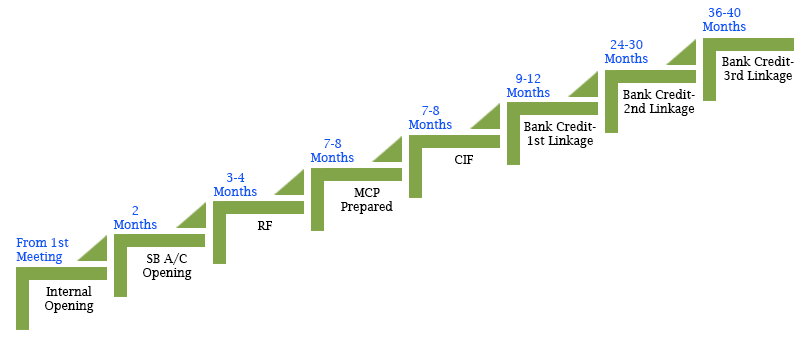ABOUT-US
NRLM implementation is in a Mission Mode. This enables
Shift from the present allocation based strategy to a demand driven strategy enabling the states to formulate their own livelihoods-based poverty reduction action plans,
Focus on targets, outcomes and time bound delivery,
Continuous capacity building, imparting requisite skills and creating linkages with livelihoods opportunities for the poor, including those emerging in the organized sector,
Monitoring against targets of poverty outcomes. As NRLM follows a demand driven strategy, the States have the flexibility to develop their livelihoods-based perspective plans and annual action plans for poverty reduction.
The overall plans would be within the allocation for the state based on inter-se poverty ratios
NRLM facilitates universal access to the affordable cost-effective reliable financial services to the poor. These include financial literacy, bank account, savings, credit, insurance, remittance, pension and counselling on financial services. The core of the NRLM financial inclusion and investment strategy is “making poor the preferred clients of the banking system and mobilizing bank credit”.

Capitalizing Institutions of the Poor
NRLM provides Revolving Fund and Community Investment Fund (CIF) as Resources in Perpetuity to the institutions of the poor, to strengthen their institutional and financial management capacity and build their track record to attract mainstream bank finance.
NRLM provides Revolving Fund (RF) to SHGs of Rs.10,000-15,000 as corpus to meet the members’ credit needs directly and as catalytic capital for leveraging repeat bank finance. RF is given to SHGs that have been practicing ‘Panchasutra’ (Regular meetings; Regular savings; regular inter-loaning; Timely repayment; and Up-to-date books of accounts).
NRLM provides Community Investment Fund as Seed Capital to SHG Federations at Cluster level to meet the credit needs of the members through the SHGs/Village Organizations and to meet the working capital needs of the collective activities at various levels.
NRLM provides Vulnerability Reduction Fund (VRF) to SHG Federations at Village level to address vulnerabilities like food security, health security etc., and to meet the needs of the vulnerable persons in the village.
Access to Credit
NRLM expects that the investment in the institutions of the poor would leverage the bank credit of at least Rs.1,00,000 /- accessible to every household in repeat doses over the next five years.For this, SHGs go through Micro-investment Plan (MIP) process periodically. MIP is a participatory process of planning and appraisal at household and SHG levels. The flow of the funds to members/SHGs is against the MIPs. NRLM has provided interest subvention for all eligible SHGs to get loans at 7% per annum from mainstream financial institutions. Further, additional 3% interest subvention is available only on prompt repayment by SHGs in most backward 250 districts.
SHG Credit Linkage
While the Mission provides only catalytic capital support to the community institutions, it is expected that the banks provide the major chunk of funds required for meeting the entire gamut of credit needs for the rural poor households. The Mission therefore expects that the SHGs leverage significant amount of bank credit.
The Mission assumes that over a period five years, each SHG would be able to leverage cumulative bank credit of Rs. 10,00,000/- in repeat doses, such that on the average each member household accesses a cumulative amount of Rs. 100000/-.
In order to facilitate bank linkages, State Level Bankers’ Committees (SLBC) would constitute exclusive sub-committees for SHG bank linkages and financial inclusion in NRLM activities. Similarly, District Level Coordination Committees and Block Level Coordination Committees would review SHG-Bank linkages and NRLM.
The Mission units are also expected to use the services of the field level customer relationship managers such as, Bank Mitra/Sakhi.
Further, institutions of the poor are expected will be guided to constituting community-based recovery mechanisms (sub-committees on bank linkage and recovery of loans).
NRLM works towards increasing the portfolio of products of savings, credit, insurance (life, health and assets) and remittance through the institutions of the poor directly or in partnership with mainstream financial institutions using various institutional mechanisms and technologies.